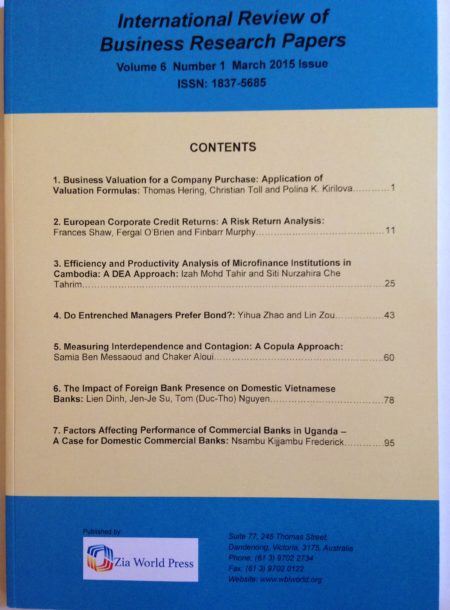International Review of Business Research Papers
Vol. 13. No. 1., March 2017, Pages: 66 – 77
Candlestick Accuracy and Investor Gain
Andreas Kiky and Ika Yanuarti
Technical analysis has been well-known by traders as one of the important tools of buying and selling when investors are investing in the capital market. This analysis has been established a long time ago since late 1869 which investors know as Random Walk and in early 1900 as Dow theory. Speculation has been a major goal of technical analysis invented, and most approaches try to capture the right moment to buy, hold or sell the stocks. At the same time, candlestick charts have also been developed in Japan by Munehisa Homma, a Japanese rice trader. Later on Steve Nisson brought this concept to the Western world. The problem arises with the question of which technical tools can be the most accurate. In this research, daily price of a certain stock in Indonesia are examined by the authors and evaluate its accuracy based on its candlestick pattern. 1-day and 2-day patterns of these candlesticks are compared by the authors and hopefully can bring insight about this sophisticated method. This result showed that there is no difference in the candlestick accuracy of 1-day pattern and 2-day pattern. While this research also suggests that an investor that uses technical analysis, especially the candlestick method, tends to be more cautious. It is true this candlestick pattern shows about 40% accuracy, but the authors prefer to be cautious about 60% unpredicted market behavior.
DOI :
https://doi.org/10.21102/irbrp.2017.03.131.05

